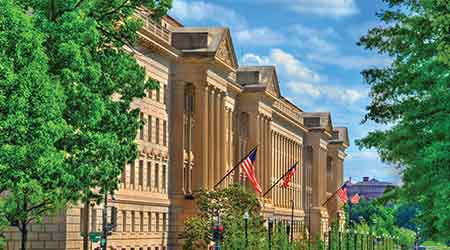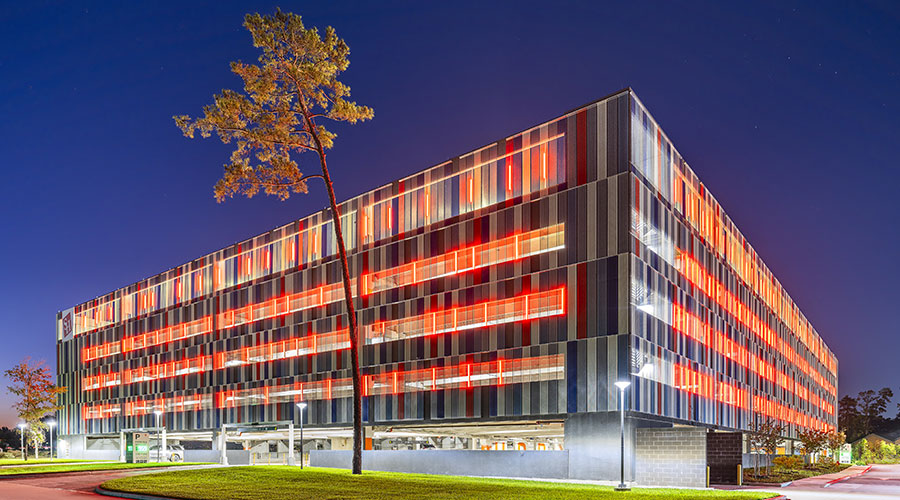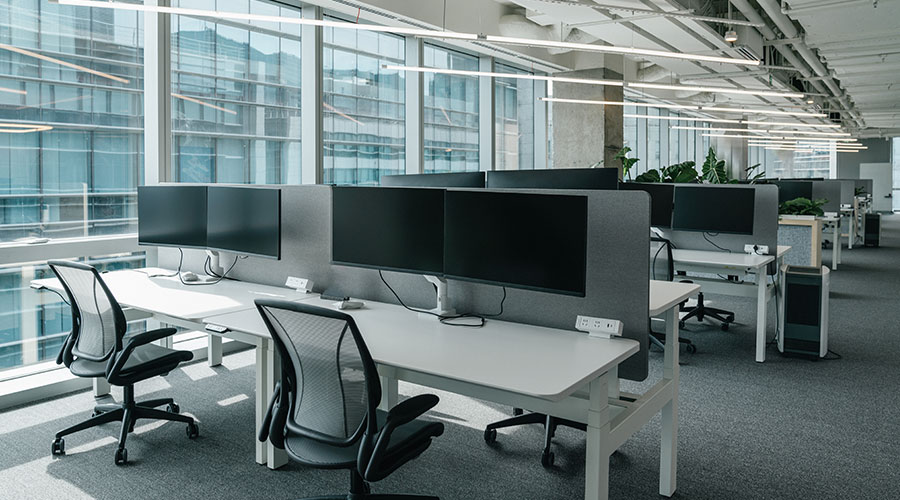LEDs: Benefits of an Upgrade
LED upgrades at the Herbert C. Hoover Building benefit occupants and the bottom line
The LED upgrade projects at the Herbert C. Hoover Building have proven successful on several levels.
The first level involves money. Actual energy savings are the ultimate bottom-line benefit of many upgrades, and for the LED installations, the results are not in yet, given that they were completed just a month ago.
“Right now, we just have projected savings,” Fay says. “This was going to be approximately a three-year payback, and given the longer life of those light fixtures, that made a lot of sense. It’s a system that we had to maintain and eventually replace regardless. So it made a lot of sense to replace the light fixtures with something that is going to pay itself back within the useful life of the new system.”
The upgrades have proven to be a success in terms of finding funding — a challenge in most organizations but an especially tough one in the federal government.
“We actually were able to achieve this (project) using a combination of an internal grant, which our internal office administers out of funds from our recycling program, and funds that we administer from our load shedding program under an agreement with our local utility,” Fay says. “So we were able to fund the project without having to dip into operational funding, which in the government is always a little tight. Those funds were earmarked for energy efficiency.
“The lesson we took is that you really need to look at the financing tools that are available. We have just started dipping into that green grant program and using those load-shedding funds to accomplish things with them.”
The upgrades’ financial benefits have also affected the department directly.
“In addition to saving on electrical costs, the new fixtures will last longer and require less maintenance than the fluorescent units they replaced,” Fay says.
The next level of benefits from the upgrades involves their impact on building occupants and visitors.
“Overall, we’re pretty happy with the performance we’ve achieved,” Fay says. “The performance feedback we’ve gotten is mostly positive from the tenants. They’re happy with the superior quality of the lighting. A lot of times in an efficiency project, you don’t make people happy, and this time we did.
“You actually can make people more satisfied if you do a little research and make sure you make good product selections. You can make people happy not just because you’re saving money and not just because you’re saving the environment. You’re actually making it a nice environment.”
The third level of benefits from the upgrades involved broader installations of LEDs in the building, which was a goal from the beginning.
“In selecting this project, the goal was not just this minor project,” Altermatt says. “It was to work on sustainability and improve our green footprint, and then use this as our demonstration model and make sure we could get that broadcast across the whole second half of the renovation. We wanted to leverage the time and resources that go into a project like this to get the biggest possible return. In our minds, that was not just the energy savings and the tenant satisfaction. It was to leverage a much, much larger project.”
The project’s results to date have given them the leverage they sought.
“Due to the success of this initial pilot, additional funding has been provided to finish out the attic and mechanical rooms,” Fay says. “LED fixtures are also now specified on an overall modernization project and will eventually be installed for all 2 million square feet of the building.
“We got this project integrated into phase four of the renovations, so that’s going to take care of the last one-half million square feet of the building. We also are evaluating our ability to do this in other areas, including some of our higher-access corridors. That’s a larger investment than we were able to make during the original project, so now that we’ve shown it’s something we can do and something we can get funding for, we might be able to move forward and expand this through some of the unrenovated building while we wait for the GSA to finish their project.”
Related Topics:













